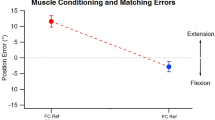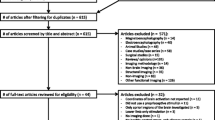Abstract.
Perception has commonly been seen as a conscious performance. Thus, regarding proprioception in some publications, it has been proposed that the term is properly used only when subjects are able to report on the direction as well as presence of imposed movements. Consequently, detections of movements without movement-direction perception have not been accepted as perceived, since these detections were regarded as unspecific. Unspecific sensation has been suggested to precede perception. From this "two-state model", it follows that threshold values should be lower for unconscious unspecific perception than for conscious specific perception. The aim of the present study was to test this suggested dichotomy. Proprioception was compared in unspecific detection trials (only the occurrence of a movement had to be detected, not its direction) and direction-specific detection trials (the occurrence of a movement of a specific direction had to be detected). Two types of specific detection trials and two types of unspecific detection trials were studied. Pairs of threshold values were determined, regarding amplitude detection using different angular velocities and regarding velocity detection using different angular displacements, for flexion and extension. Our results showed that, independent of each other, both threshold paradigms (amplitude detection and velocity detection) revealed the same perception characteristics. In specific detection paradigms, the proprioceptive thresholds were two times lower than in unspecific detection paradigms. Thus, movements of a particular type could be detected more easily than movement per se. The suggested "two-state model" might, therefore, not be appropriate in describing proprioceptive perception.
Similar content being viewed by others
Author information
Authors and Affiliations
Additional information
Electronic Publication
Rights and permissions
About this article
Cite this article
Weiler, HT., Awiszus, F. Differences between motion-direction perception and unspecific motion perception in the human knee joint. Exp Brain Res 132, 523–530 (2000). https://doi.org/10.1007/s002210000378
Received:
Accepted:
Issue Date:
DOI: https://doi.org/10.1007/s002210000378




